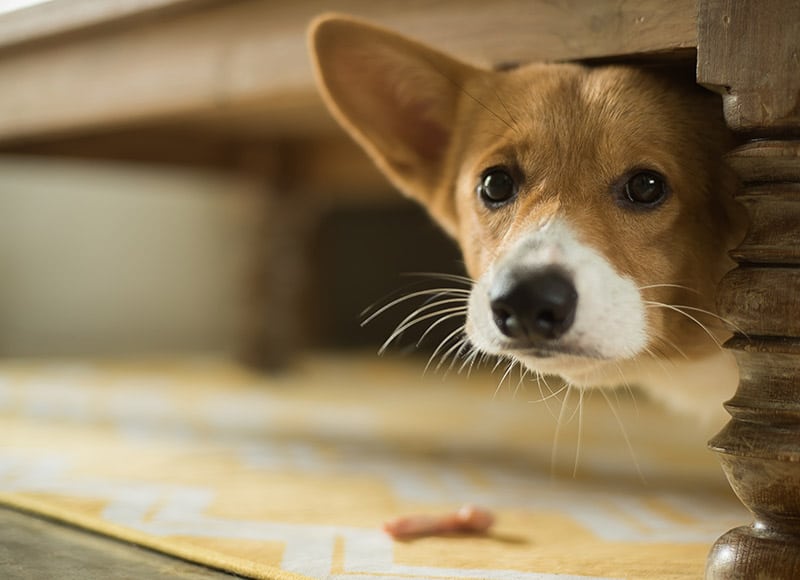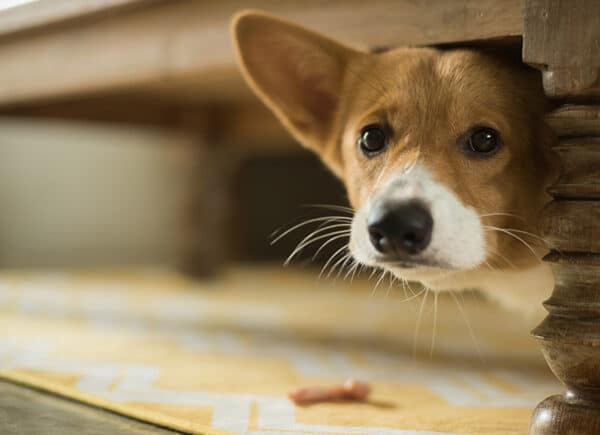Click to Skip Ahead
You didn’t get a puppy just to leave them alone at home all the time! That said, you also can’t be expected to stay with them 24 hours a day. Work, grocery shopping, and other activities that are necessary for your quality of life cannot be overlooked to ensure that your puppy is never left alone. Fortunately, it’s possible to leave a puppy alone for certain lengths of time without sacrificing their safety, happiness, and positive life experiences.
So, how long can your puppy be left alone? There is no simple answer to this question but it partly depends on their age. Very young puppies shouldn’t be left alone for longer than about an hour. Older pups may be able to stay alone for up to 4-6 hours. Here’s what you should know.

How Long Your Puppy Can Stay Alone Based on Potty Break Needs
Your puppy should not be spending their time alone outdoors, even in a fenced yard, as anything can happen without supervision. So, since your pup will be inside while you are gone, their need to potty will be one factor that dictates how long they can be left alone.
Here is a rough guide to how long a puppy can hold their bladder:
| Up to 10 Weeks | Up to 1 Hour |
| Between 10 and 12 Weeks | Up to 2 Hours |
| 3 Months of Age | Up to 3 Hours |
| 4 Months of Age | Up to 4 Hours |
| 5 Months of Age | Up to 5 Hours |
| 6+ Months of Age | 6 to 8 Hours Max |
While there will be individual variation between puppies, you want to ensure that your puppy is comfortable and ideally doesn’t have an accident while you’re away. Make sure someone is there to take them on potty breaks when necessary.
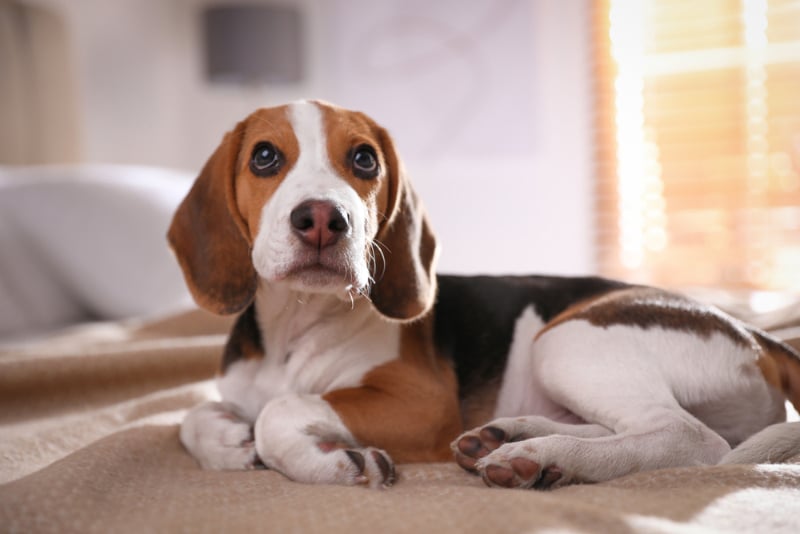
The Importance of Socialization
Potty break needs are not the only thing to consider when working out how long your puppy can be left alone. Dogs are social animals and need human companionship, they are likely to experience anxiety and stress if left alone for long periods. Puppies in particular need adequate time with their human family for bonding, as well as training and socialization.
The first 4 months of a puppy’s life are particularly influential from a socialization and learning point of view. This socialization period is a phase of development when puppies are learning to accept the sights and sounds of ‘normal’ life so that they can be comfortable and confident in the world they live in. Gradual and careful introductions to different people, dogs, places, noises and objects in a positive way are vital in this period in particular. If a puppy spends too much time alone it may affect their development into a well rounded and happy pup.
The 5 Tips for Teaching Your Puppy to Spend Time Alone
Puppies need time to gradually adjust to spending any length of time alone. Consider taking a few days off work when you first bring home your pup to make sure you can prepare them for being left alone. The more time you have to spend bonding with them, the more successful the experience should be for both of you in the long run. As with all training you need to take your time and be patient. Here are some tips to help teach you puppy to be calm and relaxed when left alone:
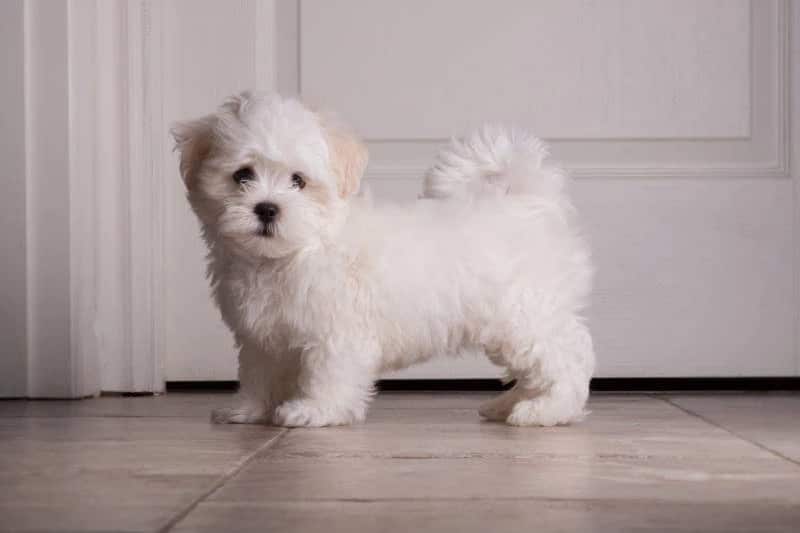
1. Create a comfortable and safe area
Consider keeping your puppy confined to a safe space in your home rather than letting them have free reign. This will help ensure that they don’t get into anything that could injure or poison them and provide you with peace of mind knowing that they are safe when you are not there to supervise them. You can acclimatize them to a crate that is large enough for them to stand, turn, lie down, and walk around in without spilling the food and water that you leave for them. It should also be big enough for them to play with toys.
Start slow, have your pup in the crate when you are at home and then leave the room so they can get used to not seeing or hearing you for short periods at a time. Gradually increase the length of time that you are gone, while making sure your puppy doesn’t show signs of distress. Make sure their confined space is comfortable, fun, and rewarding instead of punishing.
Ensure that the crate is outfitted with soft bedding, food and water, and a special toy that is only accessible in that space. Give your puppy plenty of praise when they hang out in the crate without complaint, even if for just a short amount of time. Feed them their meals in there until they don’t mind spending time in the space.
You don’t have to utilize a crate to confine your pup to a safe space while you are away. Consider using a playpen or a puppy-proof room instead. You can also use a baby gate to cordon off an area, such as the kitchen, to create a safe confinement area.
2. White Noise
If your puppy displays apprehension when you leave them alone in a room of your home, you can use a white noise machine to help calm them and make them feel safer. The idea is that the noise will mask other sounds that could scare your dog or make them feel insecure in some way. People walking down the sidewalk and/or talking outside, cars driving by, birds chirping, and other daily noises can be disturbing to puppies because they don’t know what those are. White noise will help relax them and give them a sense of stability while you are away.
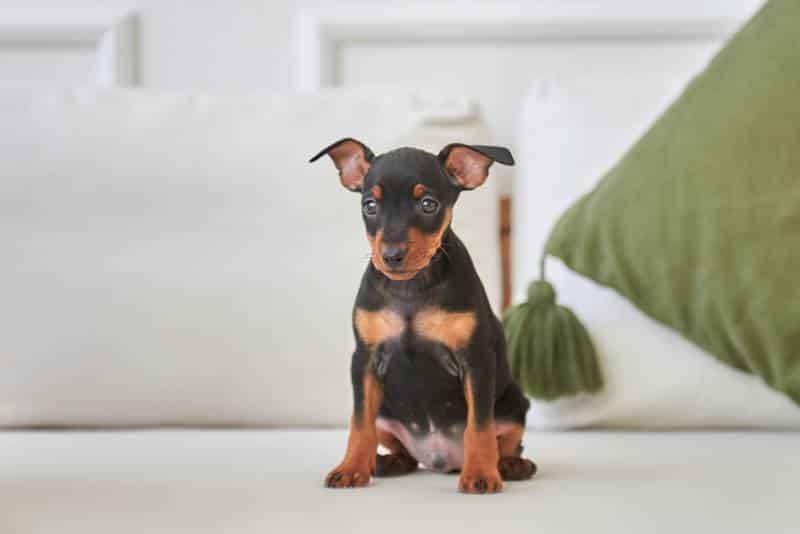
3. Entertainment
If a puppy gets bored, they are liable to engage in destructive behavior, and they could develop separation anxiety. They need stimulation and entertainment for a strong mind and a happy life. So, make sure your puppy has plenty of entertainment to turn to when you are away (and of course, when you’re there too!). An excellent way to provide your dog with entertainment with educational value is to make an interactive toy available to them. Things like a stuffed Kong or other treat dispensing or puzzle toys can be good options to keep them busy while you’re gone. Make sure all toys are puppy safe and can’t be chewed and swallowed.
4. Create a Routine and Stick With It
It is crucial to create a routine for your puppy so they know what to expect in their lives from day to day. After all, they are creatures of habit. Maintain a potty routine that can be followed whether you are home or not. If they go out to potty every 2 hours when you’re gone, keep that same schedule when you are home with them. Make a routine out of mealtime, playtime, and any other activity that is central to your dog’s day. This should help them maintain a sense of stability and confidence, whether they are home alone or spending time with household members.
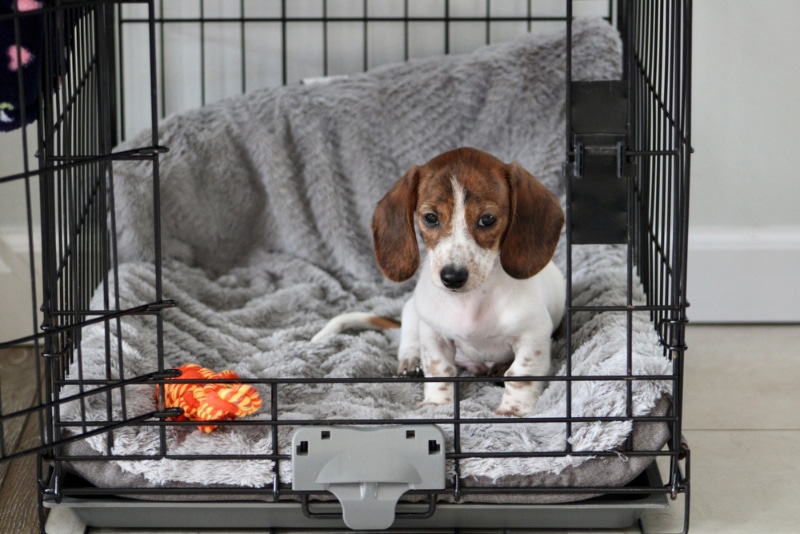
5. Consider Hiring a Puppy Sitter
If you or your puppy are having a hard time adjusting to them staying home alone, consider hiring a puppy sitter to relieve the stress throughout your week. They don’t have to be there the entire time that you are gone. But they should be there for the bulk of the time—say, for 2 or 3 hours in the middle of the day if you’re gone all day for work. The sitter can interact with your puppy, take them on a short walk, feed them if necessary, and make sure they have plenty of opportunities to relieve themselves. Alternatively, you can ask a friend or neighbor to show up for potty breaks while you’re away.

Final Thoughts
Bringing home a new puppy is an exciting experience, but it is also a great deal of responsibility. Dogs are very social animals and need plenty of companionship. You must plan for leaving them home alone to ensure their health and safety while you are away. You also need to teach them to feel comfortable when they’re alone so they don’t develop behavioral issues like separation anxiety or depression. Knowing roughly how long they can be left alone is a great first step in the process.
Featured Image Credit: Paul’s Lady, Shutterstock

